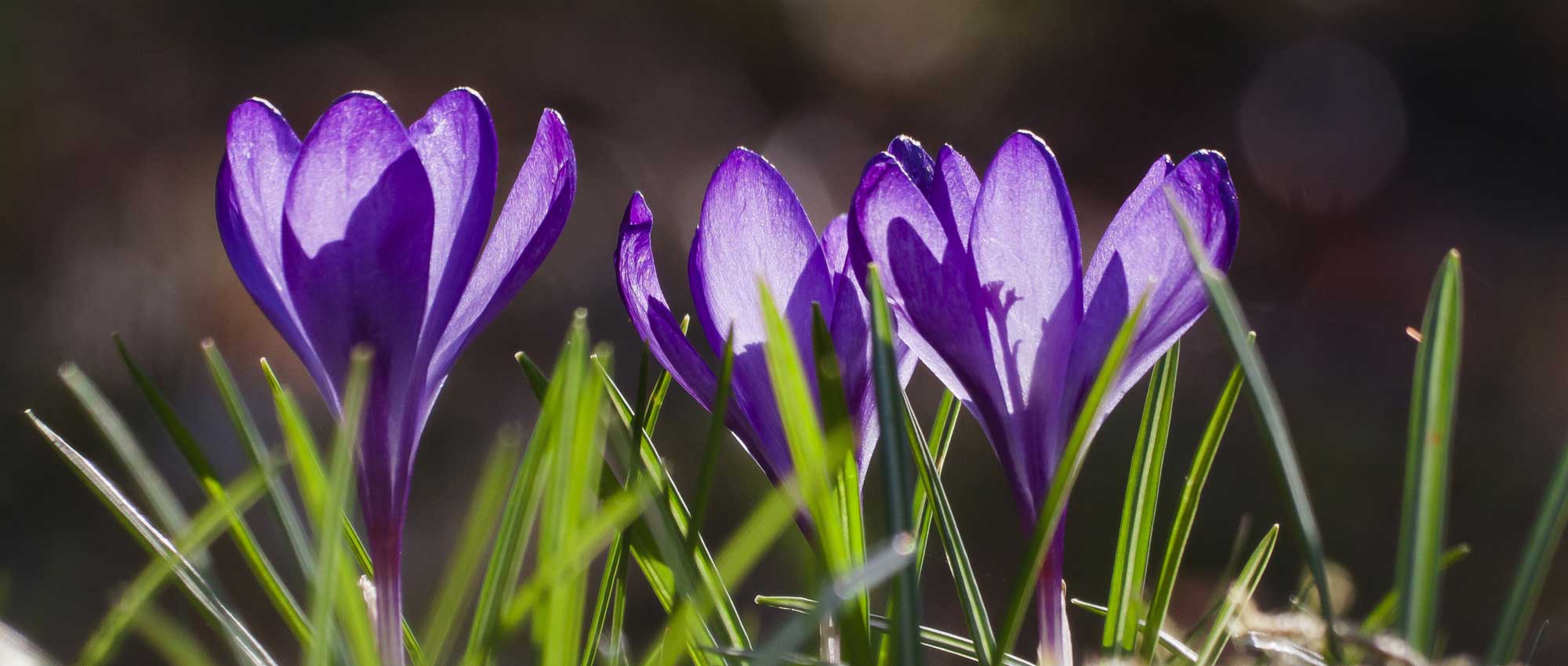
Which crocuses to choose and how to combine them in the garden?
For a flower-filled garden by the end of winter
Contents
The crocus is one of the very first flowers of spring and can even bloom at the end of winter. It is a small bulbous plant that offers a delicate flowering, with great simplicity. Its petals, in shades of white, purple, or yellow, create a beautiful contrast with the bright orange stamens that appear at the centre.
The crocus is the perfect companion for snowdrops and snowflakes, which bloom at the same time. Their white flowering has the advantage of easily matching with other colours. It can also accompany other spring bulbs such as daffodils or chionodoxas, as well as primroses or pansies. Whatever plants you choose, we recommend planting them at the same time as the crocuses, to avoid damaging the bulbs.
Plant your crocuses preferably in groups of at least ten or fifteen bulbs at a time. You can mix varieties of different colours! And to enjoy a long flowering period, which extends from February to April, combine early flowering crocuses, such as Crocus ancyrensis, with later flowering ones, like Crocus vernus ‘Pickwick’.
The crocus adapts to many situations: it can bloom in a short grass meadow or at the foot of bushes, be planted in rockeries, in planters… or even on a green roof! It requires little maintenance and does not take up much space. It is easy to grow. It mainly needs to be planted in well-draining soil and in sunlight, although Crocus tommasinianus tolerates partial shade. It does not like excess moisture and grows in all types of soil, even poor, as long as it is well-draining! Discover all our tips for choosing the right variety and pairing it in the garden!
For a colourful end to winter!
Create a flowering bed very early in the season by pairing your crocuses with bulbs or perennials that bloom in late winter. Choose the earliest varieties, such as Crocus ancyrensis or Crocus chrysanthus ‘Blue Pearl’. Plant them alongside Oriental hellebores (Helleborus orientalis), primroses (Primula acaulis), or Adonis vernalis. For lasting colours, focus on the decorative and evergreen foliage of heucheras!
Pair crocuses with spring bulbs such as hyacinths or tulips. When planting, you can layer several bulbs by choosing flowers that are planted at different depths!
You can create a beautiful winter atmosphere by selecting plants that bloom early!

Tulipa kaufmanniana ‘Goudstuck’, Tulipa ‘Johann Strauss’, Crocus ‘Mammouth Jaune’ and Hyacinths
In a meadow
Crocuses are truly perfect for flowering a short grass meadow! The uniform green of the meadow will highlight their vibrant flowering. To achieve a beautiful tapetum of flowers, opt for the Crocus tommasinianus ‘Ruby Giant’! It naturalises easily and will cover your meadow with its beautiful deep purple flowers. Feel free to combine several varieties. You will find mixes available that bring together a large number of crocuses from different varieties. This is a simple solution that will add a lot of colour to your garden, but choosing the colours yourself allows for a more harmonious ensemble. The varieties with white flowers have the advantage of easily pairing with all other colours. You can combine them with spring bulbs like tulips or daffodils!
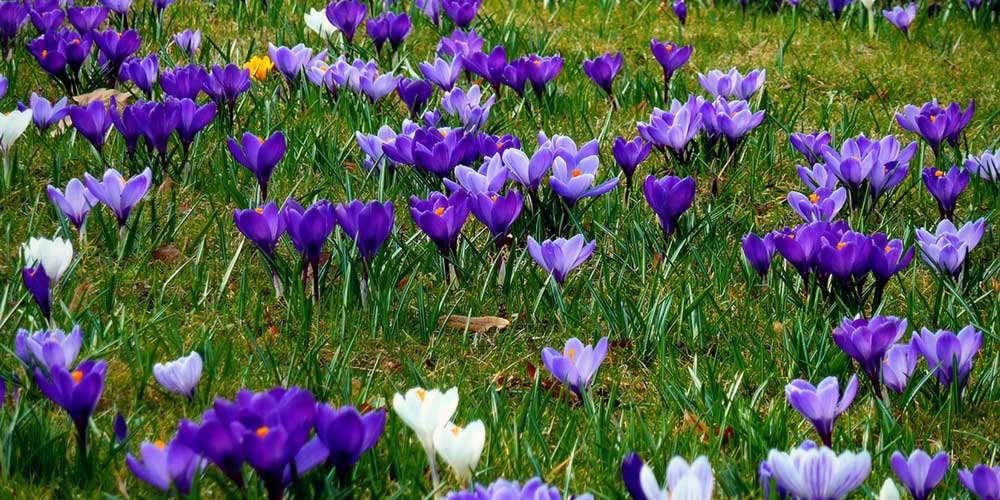
Crocus ‘Mammouth’ in a mix in a meadow
Discover other Spring Crocus
View all →Available in 1 sizes
Available in 1 sizes
Available in 0 sizes
Available in 1 sizes
Available in 1 sizes
Available in 0 sizes
Available in 1 sizes
Available in 0 sizes
Available in 0 sizes
Available in 1 sizes
In rockery
As crocuses thrive in sunny locations and well-drained, even stony soils, they can easily be incorporated into a rockery! Choose Crocus sieberi ‘Tricolor’ and plant it alongside other drought-tolerant plants. Position a few clumps of saxifrages, Iris reticulata, or Turkish bindweed (Convolvulus cneorum). You can add a bit more volume by including lavenders or euphorbias. This bed will require very little maintenance!
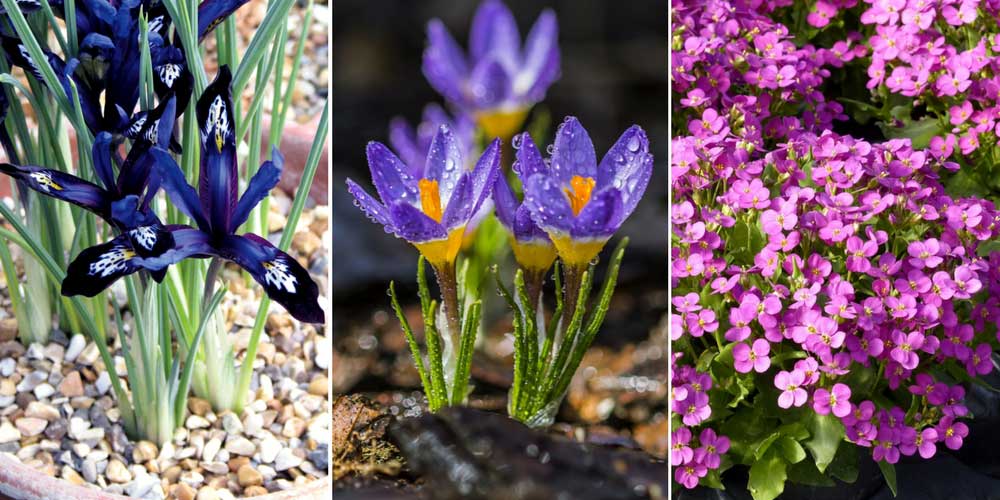
Iris reticulata ‘Blue Note’ (photo Peganum), Crocus sieberi ‘Tricolor’ and Arabis caucasica ‘Roselite’
Read also
Crocus: how to plant them?In clear woodland
Crocuses tolerate light shade, especially Crocus tommasinianus. They do not require full sun to flower. At the end of winter, as soon as temperatures begin to warm up, the undergrowth will be covered with a splendid purple tapetum! Plant it with spring snowflakes: they thrive well in partial shade and bloom at the same time. Their white flowering will gently accompany the lilac flowers of Crocus tommasinianus. For more colour, you can add a few young plants of Winter Aconite, Eranthis hyemalis! It will bring brightness to the undergrowth.
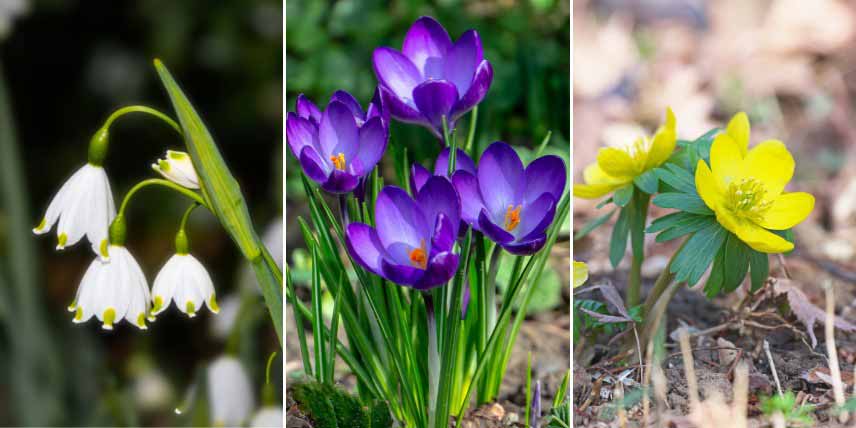
Spring snowflake (Leucojum vernum), Crocus and Eranthis hyemalis
In a pot or planter
Even without a garden, you can grow your crocuses by placing them in pots or containers that you can leave outside. Take the opportunity to brighten up a terrace! To accompany them, choose other spring bulbs, such as muscari, chionodoxa, or dwarf daffodils. Create stunning arrangements by pairing them with primroses and the colourful foliage of heucheras! It is best to plant them in terracotta pots: they allow for air circulation and will reduce the risk of rot to which bulbs are sensitive.
Find more bulbs to grow in pots here!
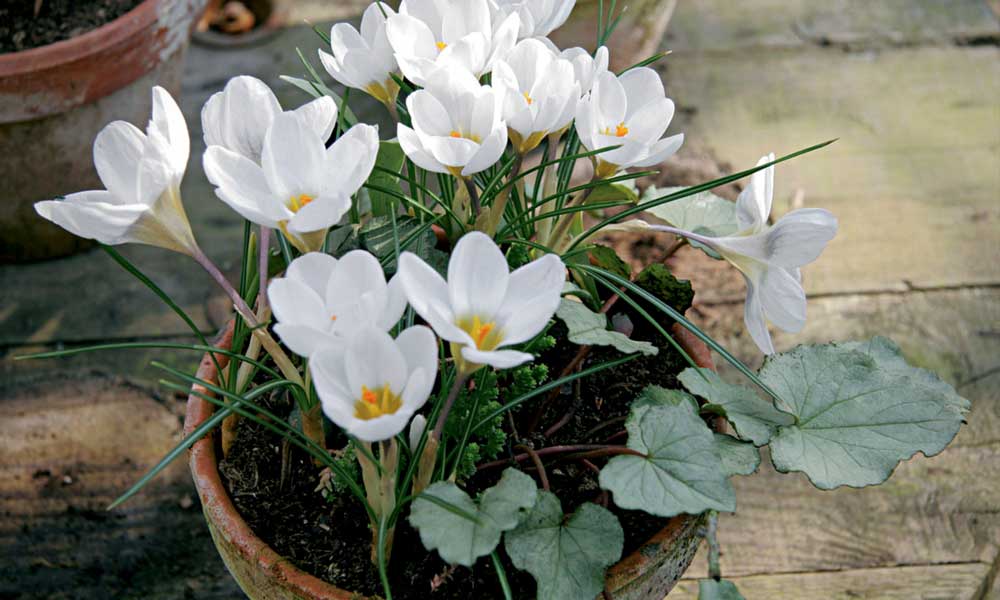
Crocus ‘Miss Vain’ and Cyclamen
In a colourful mixed border!
Create a colourful bed by combining your crocuses with other bulbs or spring-flowering perennials. Position your bed in front of a wall or hedge, placing the tallest plants at the back, such as small bushes or miscanthus. Plant your crocuses at the front, in groups of at least 10 bulbs of the same colour, alongside daffodils or tulips. You can also pair crocuses with ground cover or perennials that start their growth later. In spring, you will enjoy the flowering of the crocuses, after which they will disappear to make way for other plants.

Crocus ‘Ruby Giant’ and Iris reticulata ‘Harmony’, Tulip ‘Yellow Spider’, Erysimum ‘Winter Orchid’
On a roof
Yes, crocus can definitely be included in a green roof! It enjoys full sun, dislikes humidity, and doesn’t require deep soil… making it perfect for planting on a roof! However, it will need a bit more soil than sedums, which can almost thrive in just a layer of gravel. Plant it alongside alpine plants, succulents, and other bulbous plants. For a flowering roof, choose muscaris, Phlox subulata, or Cerastium tomentosum. Also, add a few clumps of Stipa tenuifolia, a small grass, to bring some volume and lightness!

Muscari armeniacum, Crocus vernus ‘Vanguard’, and Stipa tenuissima
Indoors!
You can grow your crocuses indoors and make them flower earlier than expected by forcing them. This way, you can have flowers as early as January. Pair them with other bulbs that can be forced, such as hyacinths, daffodils, or muscari. Plant them in pots in October, in well-draining compost, then place them in darkness and cool conditions, for example in a cellar. Two months later, you can take them out to place them at room temperature in a bright location, and enjoy their flowering!
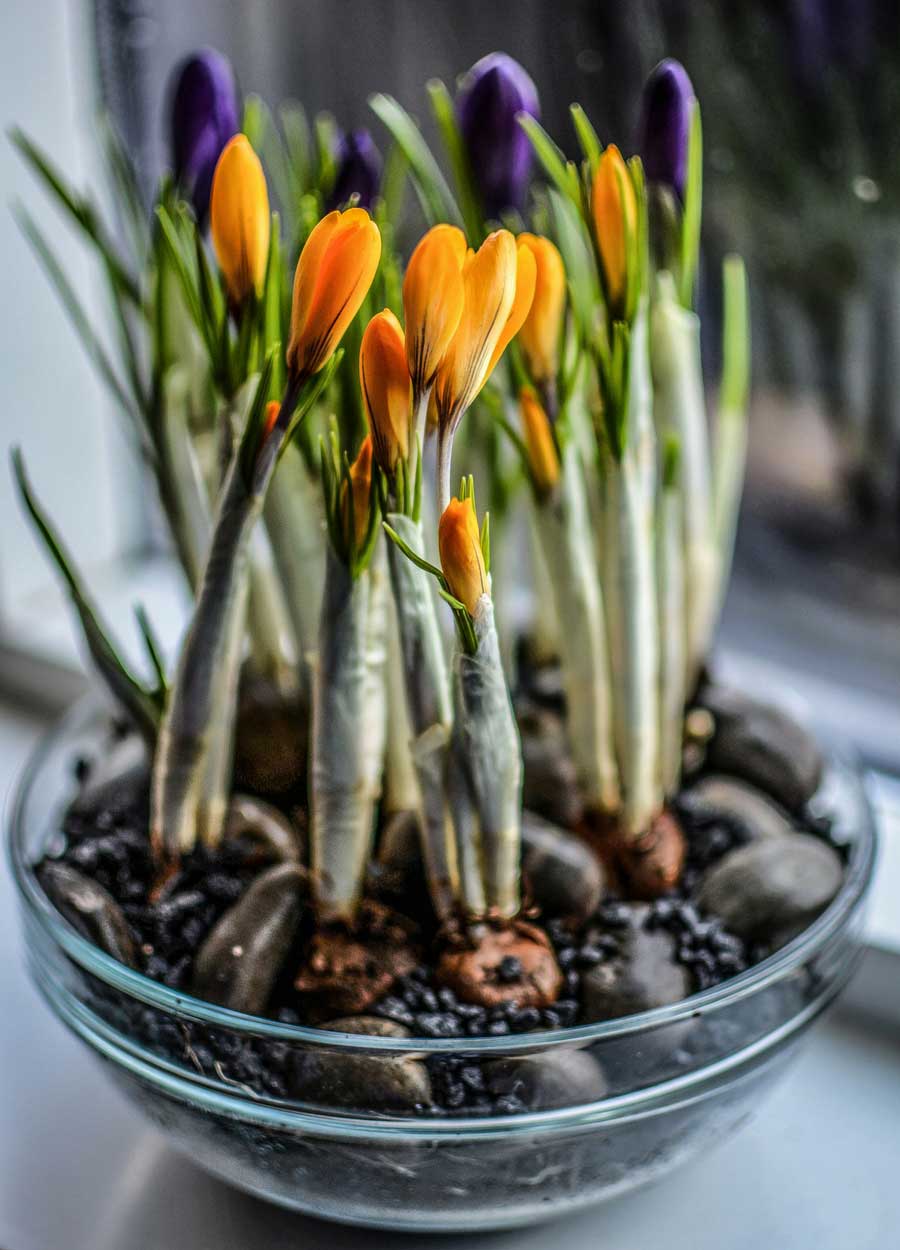
Crocuses can also be grown indoors!
- Subscribe!
- Contents































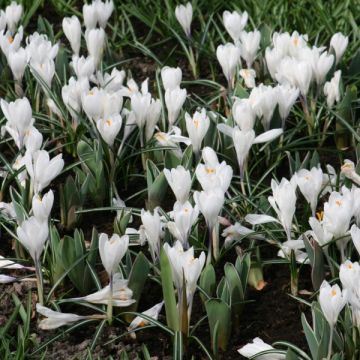
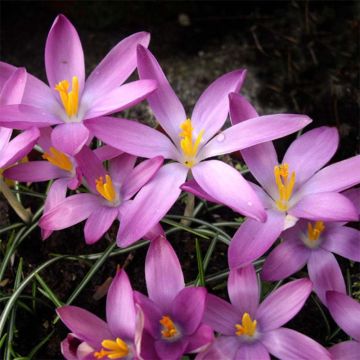

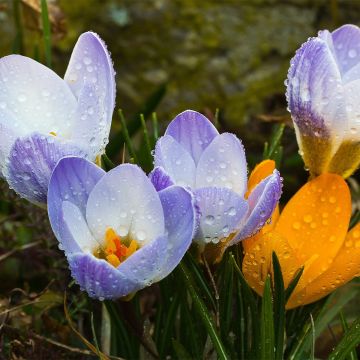
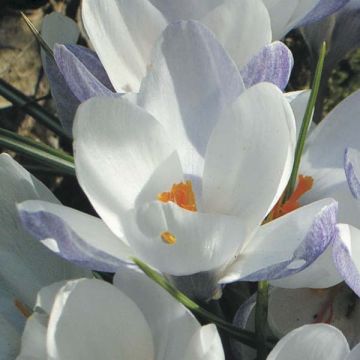
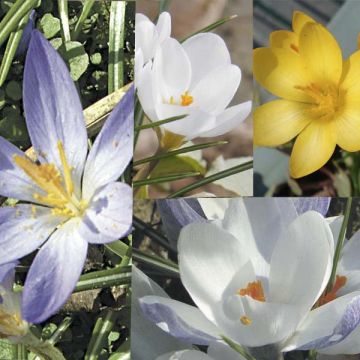
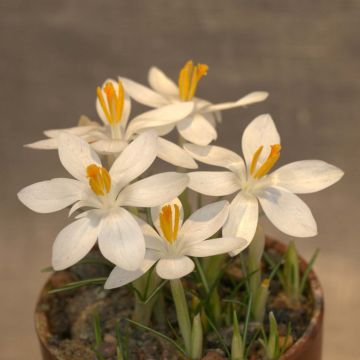
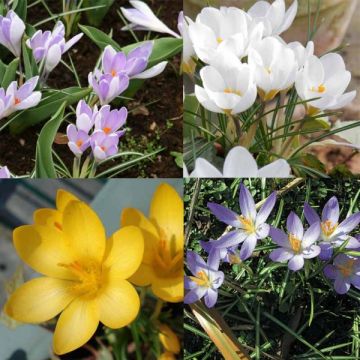
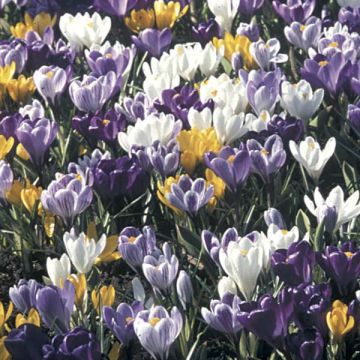
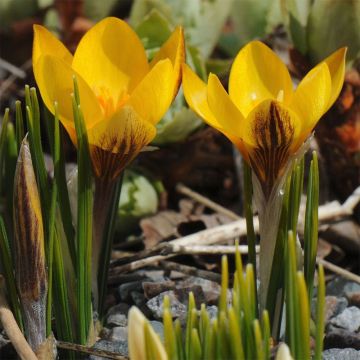
Comments